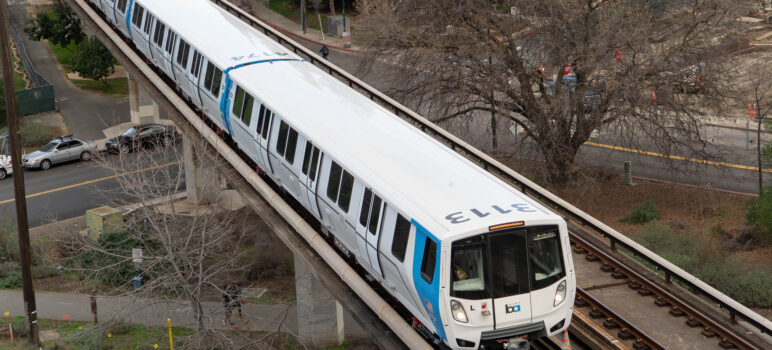BART’s preliminary budget for the coming fiscal year projects a 7% increase in ridership but remains heavily supported by federal relief funding, the transit agency’s budget officials said Thursday.
The preliminary budget projects an increase of $48 million in operating revenue over the $915 million in the agency’s adopted budget for fiscal year 2021, which spans from July 2020 to this June.
That increase is buoyed mostly by the agency using $349 million in emergency relief funding from the federal government, $38 million more than BART utilized in fiscal year 2021.
The 7% ridership increase would amount to an $11 million increase in revenue for the agency, from $148 million in fiscal year 2021 to $159 million in fiscal year 2022.
The preliminary budget also includes a $31 million shortfall, mostly due to the agency’s current plan to re-expand service in September by offering more frequent trips and later service. That plan is expected to cost the agency $43 million over the cost of BART’s current service schedule.
Christopher Simi, BART’s budget director, said the agency expects to cover the $31 million deficit by the time BART’s Board of Directors approves the budget in June, using a combination of reduced operating costs from the agency’s incentivized early retirement program and additional federal relief funding.
“Federal funding has been critical and has allowed us to maintain services during this time and get through our ridership trough,” Simi said to the BART Board of Directors Thursday. “We also know it won't last.”
BART's ridership has hovered around 10% of pre-pandemic levels since the Covid-19 pandemic began last year, a drop that opened a chasm in the agency's financial planning.
Ridership in recent weeks has begun to creep up for the first time since then, getting closer to 15% of pre-pandemic baseline levels.
BART officials expect late summer to be an inflection point, when widespread vaccination against the coronavirus will begin pushing ridership higher until March 2022, when it is projected to stabilize around 50% of pre-pandemic levels.
“We're assuming here that the pace of recovery improves beginning in September, when we expect many schools and workplaces to have more folks begin to be on site again,” BART Financial Planning Director Michael Eiseman said.
Board Director Janice Li framed the planned increase in service, and its impact on financial planning, as BART betting on itself that riders will want to return to public transit after more than a year away.
BART officials are currently examining incentives like group fare rates as one tool to help boost ridership in the months ahead, something Li and Board Director Rebecca Saltzman both targeted as crucial to the agency remaining solvent in the years ahead when the federal pandemic relief funding has dried up.
Saltzman also suggested the agency hold off on introducing those incentives until service actually increases in September.
“As much as I want people to return to BART right now, I think fare incentives will get a lot of press coverage and will bring a lot of people to BART who either didn’t used to ride regularly or haven’t ridden in a long time,” she said. “And if they come back and see these 30-minute headways or they go out to dinner and then they realize they’re stuck because BART’s not running and it’s 9:30[pm], we’re not going to get those people back.”
By fiscal year 2025, BART budget officials said the agency is on track to accrue as much as $1 billion in cumulative deficits before federal relief funding is accounted for.
Earlier this year, Eiseman noted that BART is not on track to return to even 80% of its pre-pandemic ridership until the end of the decade, kneecapping the agency’s main revenue source for the foreseeable future.
“We need to get back to 350,000 riders to get a balanced budget,” Board Chair Mark Foley said, referencing BART’s daily average ridership pre-pandemic. “Yesterday, we were at 58,000 ... So this is good planning, this is good positioning, but we need to be sure we’re keeping our eye on those milestones down the road and be able to be nimble.”


Why not ride the plague ship? What could happen?
This epidemic and its impact on ridership numbers will pass, but BART’s perennial problems (i.e. decrepit stations, perpetually out-of-order elevators/escalators, broken ticket machines, old and trashy trains, panhandlers, loiterers, fare jumpers, unhelpful and at times even surly station agents, etc.) will persist. Many people – myself included – that were once at least occasional riders now avoid using BART, primarily due to personal safety concerns, especially at night. Prioritize fixing these structural and safety problems or else the system will never be meet public transit needs and expectations.
Heavy use of ANY funding is the rule, especially for the extension to San Jose.
Meanwhile, what about the crime and filth that now characterize the system?